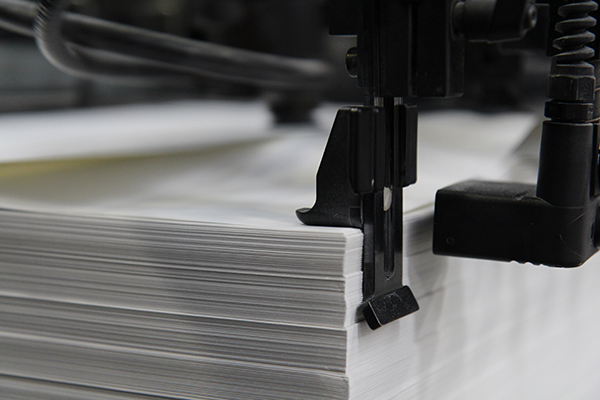Prints role in the marketing mix

Print is still a vital part of the marketing mix, and helps to provide a real world point of context for many campaigns that would otherwise exist only online. As consumers face digital fatigue through constant bombardment of emails and online advertising – in 2011 the average number of emails a corporate user received per day was 112 – incorporating printed materials into the mix can maximise a campaign’s impact by contacting them through different mediums.
One way print media can do this is by tying digital and real world campaigns together through the use of ‘bridging technologies’ such as QR codes and Augmented Reality. These new technologies enable printed materials to become a gateway to a brand’s online space, encouraging consumer engagement via a smartphone. This adds another dimension to printed materials and direct mail that was previously unavailable.
Research conducted by the Mail Media Centre last year highlights the effectiveness of direct mail. The research found that 91% of prospective direct mail was opened, and that this figure rose to 96% for personal banking. The research also identified the direct sales success of printed materials by revealing that 17.7m people ordered after receiving a mail order catalogue in the past 12 months.
Print can also allow people to take a break from the digital world and let brands convey a story in an altogether different way. Paper is a vital component in communicating a brand message and showcasing the way that companies communicate their values. This is illustrated by research, conducted by Arjowiggins Graphic (paper manufacturer of Cocoon and Cyclus 100% recycled), showing that 64% of people believe that using recycled papers portrays a company in a positive light*.
The texture, colours and finishing techniques used all add to the experience of engaging with printed materials. It is that versatility that enables brands to tell their stories in the most appropriate way. The selection of the paper has an impact on the overall outcome of the materials in particular, as it is the canvas on which the story is told.
Choosing a recycled paper to tell your company’s story is a sensible choice for those that want to highlight their sustainable commitments. There is a wide range of recycled papers available to the market and different stocks can be used to suit different jobs. Technological advances mean that recycled papers are now available that are the same whiteness and printability as virgin fibre stocks – meaning they are perfect for corporate jobs such as annual reports. One example is the Cocoon range – distributed exclusively by Antalis McNaughton – a 100% recycled offset and coated paper made from post-consumer waste. Other more traditional recycled papers are also available that help to bring a focus on green messages because of their texture and colour, which indicate a relation to the natural world.
These recycled papers are also compatible with modern printers. The development of digital printers, for example, has resulted in excellent cost savings and even environmental savings as print jobs need less run-throughs to reach a suitable standard – reducing the amount of waste in the process. Digital printing has also allowed for the production of cost effective personalised documents – a great tool for direct mail campaigns.
Print is essential in creating positive messages around green commitments – and that is why using recycled papers is suggested by global organisations such as WWF, Greenpeace and the United Nations Environment Programme. When green papers are chosen brands should make the most of their credentials by promoting that decision. Antalis can provide customers with an Environmental Benefit Statement (EBS) that demonstrate – in a clear visual manner or plain text – the tangible positive effects of using post consumer recycled paper for that specific print job.
Related Content
- Arjowiggins Graphic Sponsor RCA’s Ritual Without Myth
- Arjowiggins Graphic: the leading manufacturer of recycled papers